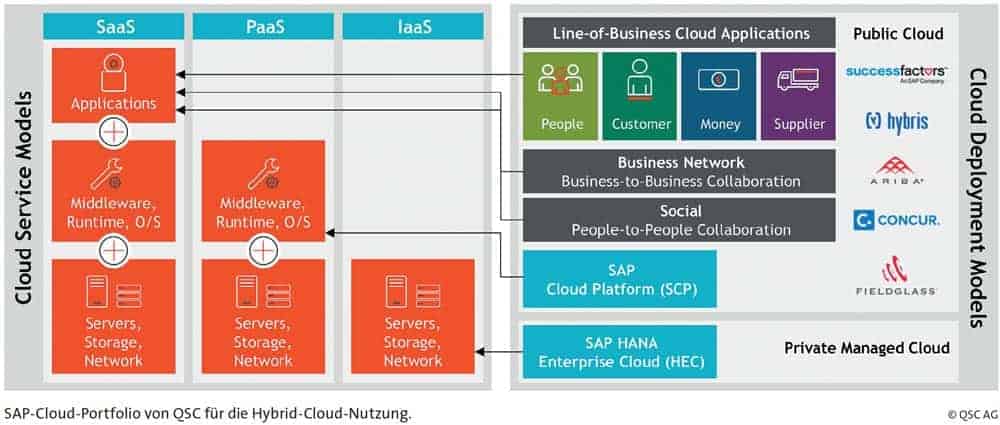Strong change mood


Increasingly, companies are turning to the R/3 or SAP ECC technology successor S/4, although there are also a handsome number that are turning to SAP software for the first time. SAP CEO Bill McDermott called S/4 a "blockbuster" in an interview with Bloomberg TV last month.
The increase over the previous year should be considerable, compared to the figures from last year's DSAG annual congress. Now the current license sales could be an estimated 6000, give or take. In any case, this means that the mood for change has continued to rise sharply.
Customers are primarily driven by the end-of-support date of the old SAP Business Suite or ERP ECC in 2025. In addition, the pressure of suffering has meanwhile increased due to a high proportion of individual customizing (Z developments) in the legacy systems.
System updates are difficult to implement and require long lead times. The flexibility required for an agile digital transformation thus tends toward zero. With S/4, SAP offers customers a way back to the standardization of processes.
In-house developments are to be mapped in the cloud so that an on-premise system remains largely standard-compliant. The number of S/4 users is thus increasing virtually on a monthly basis, with support from ICT service provider and SAP full-service provider QSC (including consulting, operations, service), for example.
Although on-premise deployment is still predominantly preferred today, SAP cloud deployments are becoming increasingly important - as the basis for bimodal IT. The fact is, from an overarching perspective, that S/4 as the digital core can be used to accelerate the end-to-end networking of important business processes - or even to realize it in the first place.
Digital core of the transformed economy
Against the backdrop of digital transformation, S/4 takes into account the use of Big Data in various forms, supports Industry 4.0 and IoT (Internet of Things) deployments, is designed for the use/integration of business networks and SAP satellite cloud systems such as SAP Ariba or SAP SuccessFactors, and can be used on premise or as a cloud solution as well as in multi-cloud environments.
Whereby in the context of S/4, the SAP Cloud Platform (SCP, formerly Hana Cloud Platform/HCP) represents a new form to individualize, modernize and consume the SAP deployment. In addition, S/4 comes with the new user interface SAP Fiori.
It aims to divide the complex SAP applications into role-based SAP Fiori apps and use them as needed. For example, in the simplification mode, so that dispatchers, for example, only see the information that is relevant to them on their cockpits. This allows them to maintain an overview at all times and achieve results more quickly.
With the major release 1610 of S/4 made available last fall, the scope of functions in the logistics area in particular was significantly expanded, which is likely to continue in the new major release with the designation 1709. SAP is pushing to combine functions and business processes on a single platform.
Application areas of a classic ERP system are of course also integrated in the SAP S/4 Hana system, although they are available in a simplified version. This means that the core business processes for procurement, production and logistics, for example, have been renewed or streamlined. As a result, they are now easier to handle in many areas and open up additional benefits. For example, through improved performance even with large volumes of data or real-time reporting.
However, it is also a fact that the technology change and the reprogramming and realignment of S/4 are associated with a number of changes for SAP customers - both in terms of processes and organization and in terms of the technologies to be used.
Likewise, the end of the line has not been reached for S/4 Hana developments, nor for solutions that extend the digital core of S/4. Such as SAP Leonardo as a cloud-based IoT integration platform. In this context, it is sometimes not easy for the customer and also SAP implementation partners to keep track of everything.
Is SAP Leonardo the same as IoT? Quite clearly: no. As has been known since Sapphire in Orlando, new technologies such as machine learning, blockchain or SAP CoPilot are also part of the SAP Leonardo platform.
The following questions, for example, are exciting: Is it possible to integrate industry solutions into an S/4 Hana platform without the complexity getting out of hand? Or: How does "indirect use" behave in concrete terms, especially in connection with IoT, so as not to fall into possible cost traps?
On the subject of indirect use in particular, it should be noted that SAP's willingness to find a pragmatic solution here with DSAG became clear at the beginning of August. It is also clear that SAP can only be successful as a platform operator if it positions itself in the market in a similar way to the hyper scalers, for example with transparent billing models, easy-to-use services or simpler pricing. Only such ingredients prepare the ground for a genuine platform business, as exemplified by Amazon, Google or Microsoft.
IoT gains strong momentum
A key development in the digital transformation is the networking of devices, the Internet of Things (IoT). Networking enables the continuous collection of data and its use in real time. In this way, user behavior can be analyzed, the service life of devices can be extended ("over-the-air updates") or new remuneration models, i.e. digital business models, can be developed.
Other applications under the term Industry 4.0 are aimed at increasing efficiency around the production process, such as predictive maintenance, so that cost reduction potentials can be realized in addition to product innovations.
The initial step in tapping the potential is always the networking of the devices and thus also the question of how the data from the devices can be collected and (securely) transmitted. Although there are initial standards that can be used to network special sensors, for example, in practice sensors are usually already installed or the challenge is how to collect and process data from the roller, drilling machine or machine controller.
Experience shows that specialists such as the IoT full-stack provider Q-loud solve these problems quickly and cost-effectively in a proof-of-concept. If management then sees usage data in real time on the screen or an app for the first time, blockades are quickly melted and a variety of approaches for revenue and cost reduction potential are found.
SAP users benefit from using this emerging real-time world by linking it to inventory data and processes. For example, if a maintenance case is alerted, required spare parts are to be identified, orders placed, routes planned, and the process also billed. These processes are often already described and anchored in the ERP and can now also be used consistently for the new use cases.
Cloud yes, but how?
Be it SAP solutions such as S/4, operation/use of the in-memory database SAP Hana including Linux, or the accelerated use of IoT: the use of cloud services is an integral part of the digital transformation. Cloud computing has long been used in an extremely flexible manner. Namely, in an extended form of hybrid cloud computing called multi-cloud computing, in which cloud services are obtained simultaneously from different cloud providers in a kind of cloud network - often also interwoven with on-premise private cloud environments (for example, on the basis of OpenStack for IaaS orchestration).
Here and there, multi-cloud use is also referred to as IT-as-a-Service. However, operating a meaningful and demand-driven multi-cloud use is about more than simply booking a selected cloud subscription. Rather, the focus is on a type of cloud transformation that is based on a strategy - tailored to the particular use case or to the individual requirements of a company - in which several aspects or
fields of action must be taken into account. First and foremost, multi-cloud deployment requires a well-founded multidimensional view, in which distinct cloud architecture know-how must come into play. One goal is one of the main focuses here: Which multi-cloud environment may or must it be?
One can compare this situation with a kind of best-of-breed approach (private, public, hybrid cloud and here which public cloud offerings?), which however always has to be worked out or defined anew. Of course, certain technical issues also play a role in multi-cloud computing.
For example, what a broadband data center connection or a sophisticated cloud network/routing and security concept should look like. Or what efficient and well-functioning API management looks like. QSC has a Multi-Cloud Consulting (MCC) division to provide comprehensive support for enterprises in their cloud transformation.
It collaborates with or utilizes all recognized frameworks/standards, such as Amazon AWS, Google Cloud Platform or Microsoft Azure. Moreover, QSC is able to offer diverse cloud services as part of the QSC Pure Enterprise Cloud via its own Multi-Cloud Hub.







